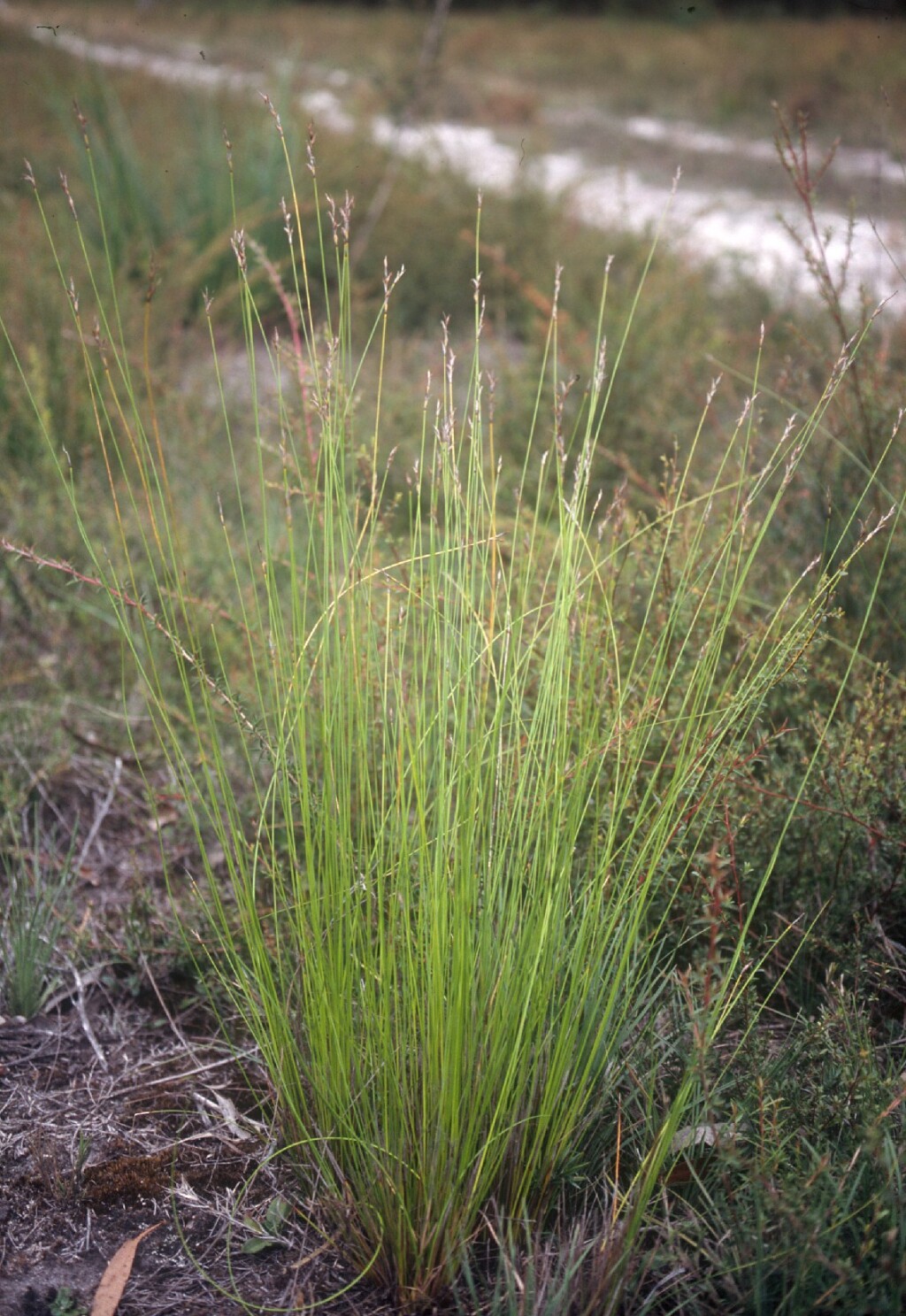Lepidosperma filiforme
Labill. Common Rapier-sedgeSlender tufted perennial with very short rhizome. Culms rigid, erect, terete or slightly compressed, glabrous, smooth, 30–100 cm high, 0.7–2 mm diam. Leaf-blades terete above, channelled near base, often more compressed than culms and shorter, to 1 mm diam., or reduced; sheaths straw-coloured to reddish, not viscid, dull. Inflorescence linear to fan-shaped in outline, erect to spreading, rachis straight or flexuose (especially on longer branches), 1–12 cm long, 0.5–8 cm diam.; involucral bract shorter than inflorescence. Spikelets few to numerous, 6–10 mm long; glumes 4–6, pale red-brown to grey-brown, the 2 or 3 lowest empty, shorter than fertile glumes, acute, mucronate, glabrous; fertile glumes 7–9 mm long, long-acute, slightly scabrous; hypogynous scales 5 or 6, whitish to yellowish, from one-quarter to one-third length of nut. Nut narrow-obovoid to ovoid, grey-green to red-brown, smooth, shining, 2.8–4.0 mm long, 1.2–1.8 mm diam. Flowers spring–summer.
Wim, GleP, Brid, VVP, GipP, OtP, WaP, Gold, CVU, GGr, DunT, EGL, EGU, WPro, HSF, OtR, Strz, MonT, VAlp. Also ?SA, NSW, Tas. New Zealand. Occurs chiefly on moist sandy soils, in heaths, woodlands and low open-forests, locally common.
Wilson, K.L. (1994). Cyperaceae. In: Walsh, N.G.; Entwisle, T.J., Flora of Victoria Vol. 2, Ferns and Allied Plants, Conifers and Monocotyledons, pp. 238–356. Inkata Press, Melbourne.
 Spinning
Spinning
